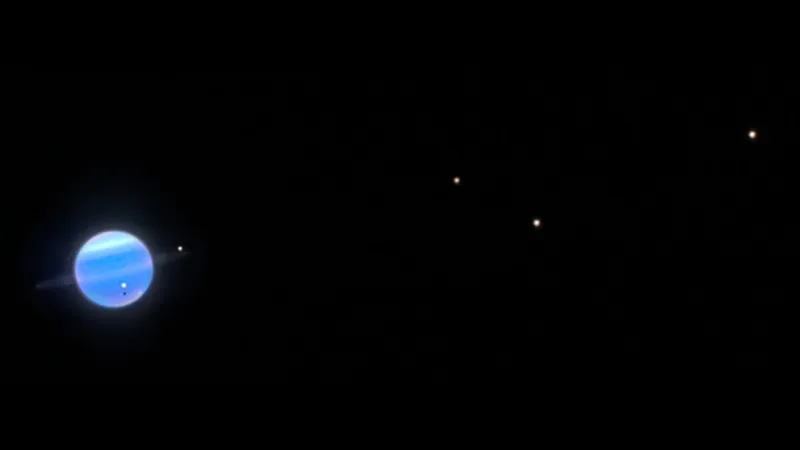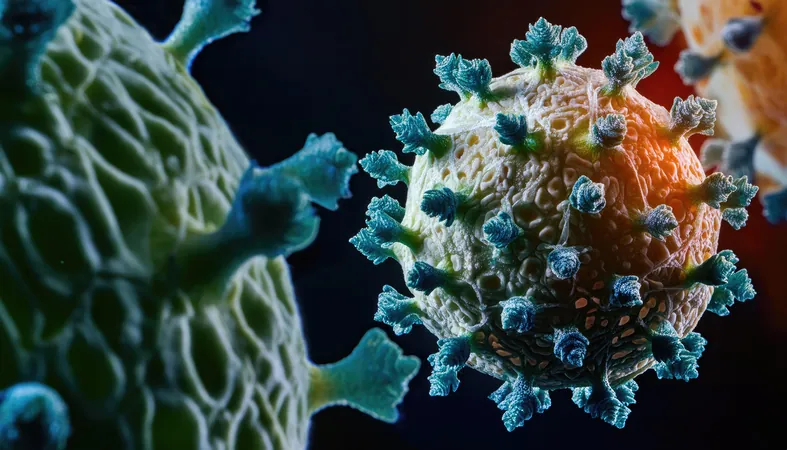
Uranus’ Moons: Shockingly Dark Secrets Revealed!
2025-06-16
Author: Siti
Unraveling the Mysteries of Uranus' Moons
Uranus, the ice giant of our solar system, has always fascinated astronomers, but recent insights into its moons are turning heads. These celestial bodies - Ariel, Umbriel, Titania, and Oberon - known for their quirky characteristics, have revealed even more surprises. Thanks to the Hubble Space Telescope, scientists have taken a closer look at the largest moons, uncovering unexpected phenomena.
The Dark Side of the Moons?
Traditionally, astronomers believed the leading side of a moon - facing the planet - would be brighter, while the trailing side would appear darker. However, the latest observations reveal a perplexing twist! Astronomers discovered the leading sides of Uranus' outer moons were actually darker and redder than the trailing ones. This revelation was presented during the recent 246th American Astronomical Society meeting in Anchorage, Alaska.
The Mystery of Uranus' Magnetic Field
The findings challenge previous assumptions about the interaction between Uranus' magnetic field and its moons. Richard Cartwright, the principal investigator of the study, expressed the strangeness of Uranus, noting that the planet's magnetic field might not interact with its large moons as once thought. With an unusual tilt of 98 degrees, Uranus stands apart from all other planets, complicating our understanding of its magnetosphere.
What’s Causing the Darkness?
Using Hubble's advanced ultraviolet capabilities, researchers found that the brightness levels of Ariel and Umbriel were surprisingly similar across their hemispheres. However, for Titania and Oberon, the expected brightness difference was flipped on its head. Scientists speculated that micrometeorite impacts on Uranus' irregular moons are responsible for the accumulation of material that darkens their surfaces.
A Surprising Conclusion!
As these moons voyage around Uranus, they collect dust - akin to a car's windshield gathering bugs on a long drive. This build-up could explain why Titania and Oberon appear darker and redder. Cartwright noted how this hypothesis was unexpected yet supported by the data, showcasing the delightful surprises that science often holds.
A New Era of Discovery Awaits!
The mysteries of Uranus and its moons deepen with every revelation, inviting more questions about our solar system. What else lies hidden in the shadows of this peculiar planet? Stay tuned for further discoveries as astronomers delve deeper into the enigma of Uranus!



 Brasil (PT)
Brasil (PT)
 Canada (EN)
Canada (EN)
 Chile (ES)
Chile (ES)
 Česko (CS)
Česko (CS)
 대한민국 (KO)
대한민국 (KO)
 España (ES)
España (ES)
 France (FR)
France (FR)
 Hong Kong (EN)
Hong Kong (EN)
 Italia (IT)
Italia (IT)
 日本 (JA)
日本 (JA)
 Magyarország (HU)
Magyarország (HU)
 Norge (NO)
Norge (NO)
 Polska (PL)
Polska (PL)
 Schweiz (DE)
Schweiz (DE)
 Singapore (EN)
Singapore (EN)
 Sverige (SV)
Sverige (SV)
 Suomi (FI)
Suomi (FI)
 Türkiye (TR)
Türkiye (TR)
 الإمارات العربية المتحدة (AR)
الإمارات العربية المتحدة (AR)